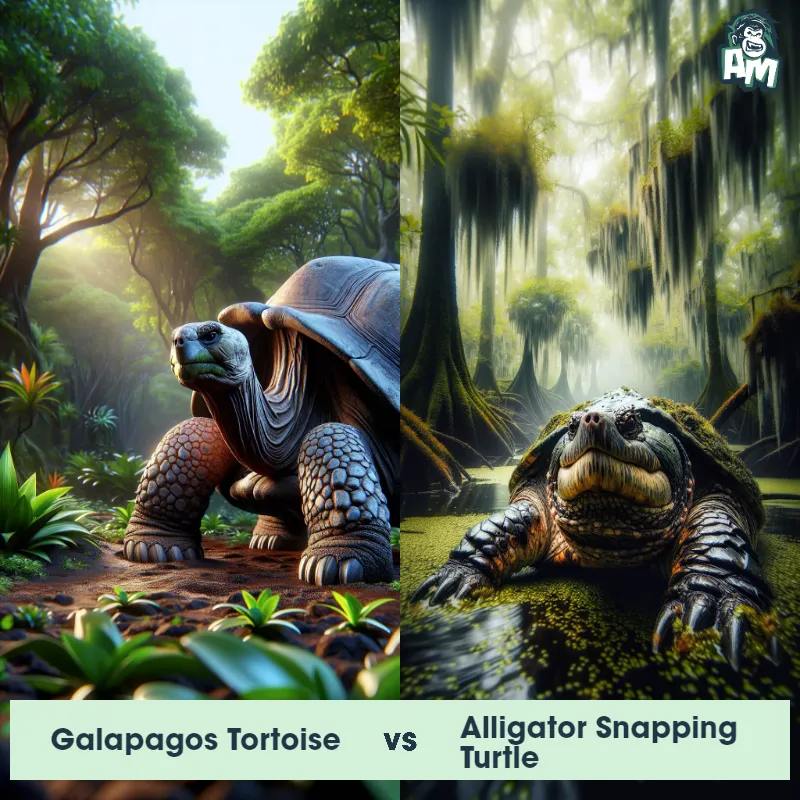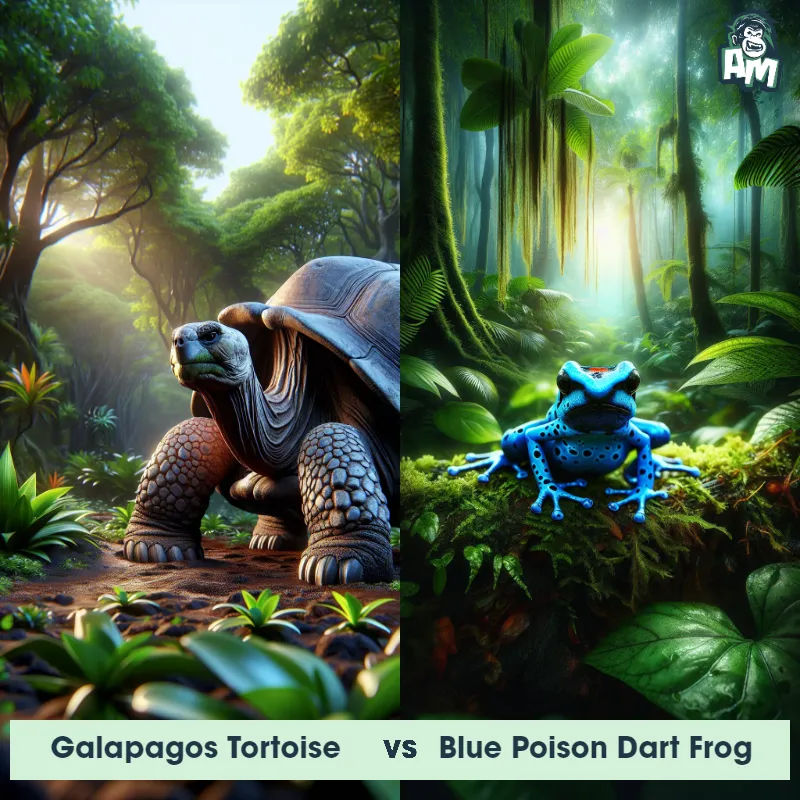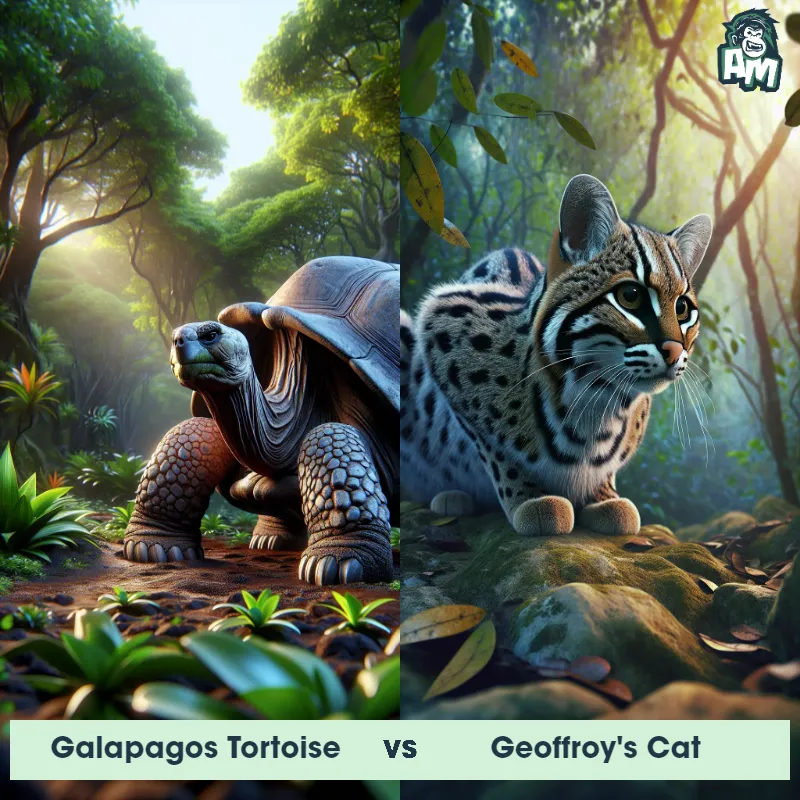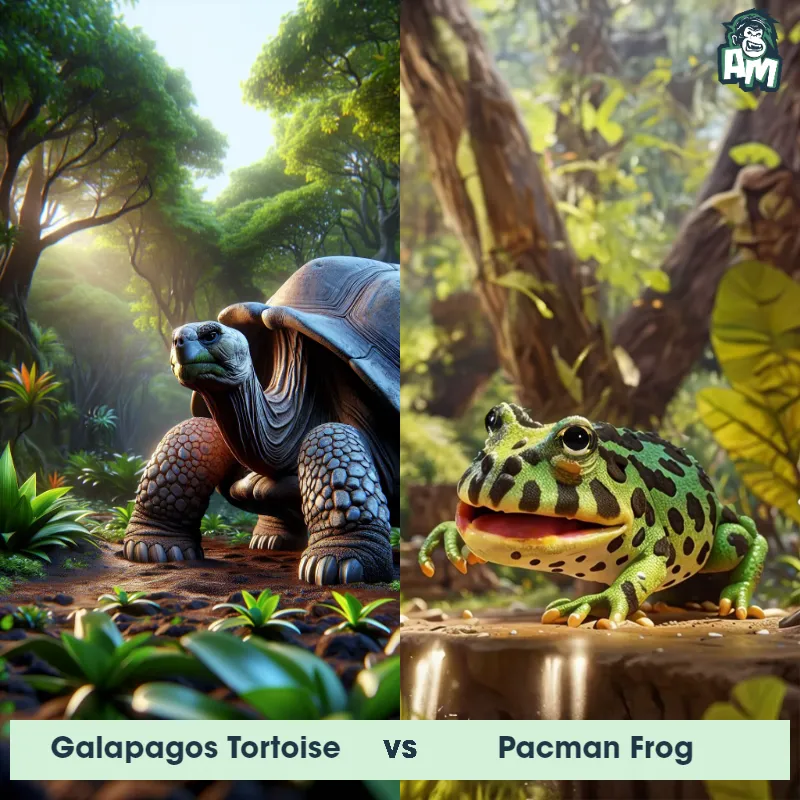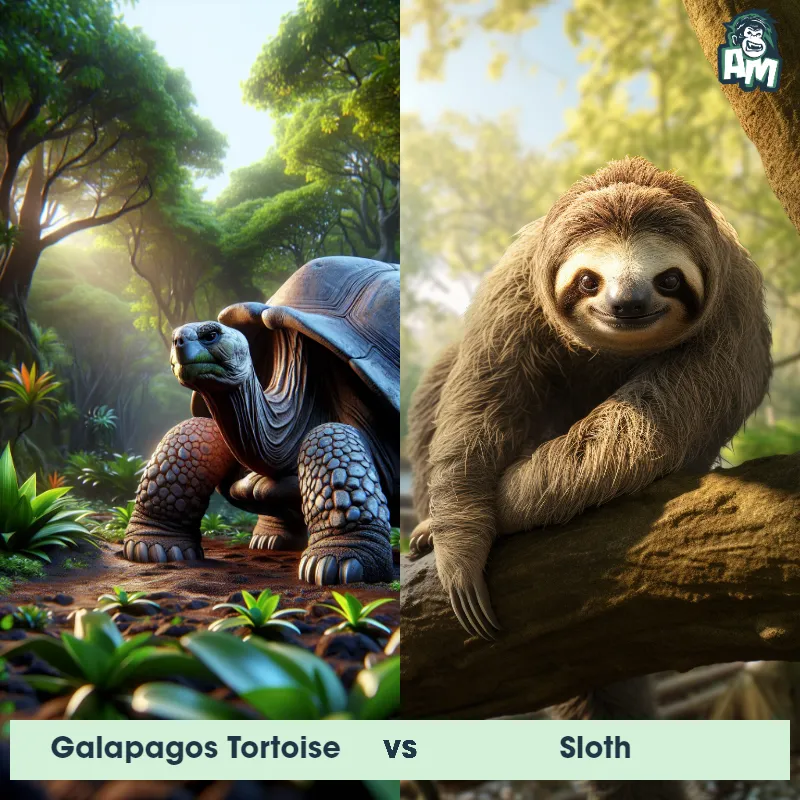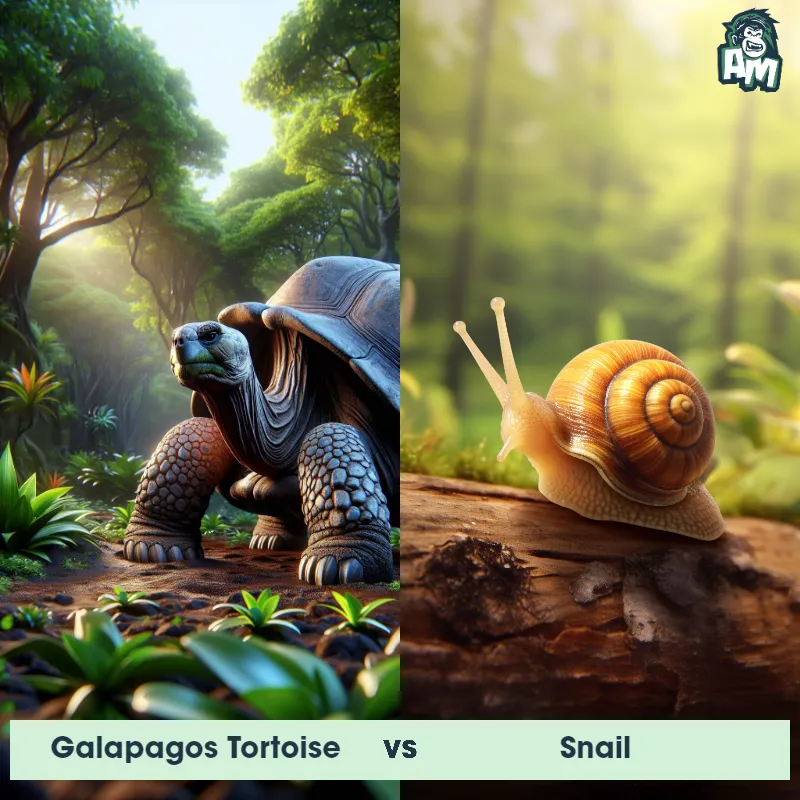The Galapagos Tortoise
The Galapagos Tortoise is a species of giant tortoise found exclusively in the Galapagos Islands, located in the Pacific Ocean. These magnificent creatures are known for their enormous size, with some individuals weighing up to 900 pounds. Galapagos Tortoises have a long lifespan, reaching over 100 years in the wild. They possess a unique saddle-shaped shell that helps them to withstand their harsh environment, as well as a long neck and sturdy limbs. Their distinct appearance and gentle nature make them a beloved symbol of the Galapagos Islands.

| Galapagos Tortoise | |
|---|---|
| Size | Up to 6 feet in length (1.8 meters) |
| Weight | Over 500 pounds (227 kilograms) |
| Speed | 0.3mph (0.48km/h) |
| Key Strength | Strong bite force |
| Biggest Weakness | Slow movement speed |
| Scientific Name | Chelonoidis nigra |
| Family | Testudinidae |
| Habitat | Terrestrial, inhabits forests, grasslands, and semi-arid regions. |
| Geography | Endemic to the Galapagos Islands, Ecuador |
| Diet | Herbivorous, primarily grass, cactus, and leaves. |
| Lifespan | 100 years - 150 years |

The Galapagos Tortoise
The Galapagos Tortoise is a species of giant tortoise found exclusively in the Galapagos Islands, located in the Pacific Ocean. These magnificent creatures are known for their enormous size, with some individuals weighing up to 900 pounds. Galapagos Tortoises have a long lifespan, reaching over 100 years in the wild. They possess a unique saddle-shaped shell that helps them to withstand their harsh environment, as well as a long neck and sturdy limbs. Their distinct appearance and gentle nature make them a beloved symbol of the Galapagos Islands.
Fun Fact: Galapagos Tortoises are known for their incredible ability to survive without food or water for long periods of time. They have an exceptional ability to store fat and water in their bodies, allowing them to go for up to a year without eating or drinking.
| Galapagos Tortoise | |
|---|---|
| Size | Up to 6 feet in length (1.8 meters) |
| Weight | Over 500 pounds (227 kilograms) |
| Speed | 0.3mph (0.48km/h) |
| Key Strength | Strong bite force |
| Biggest Weakness | Slow movement speed |
| Scientific Name | Chelonoidis nigra |
| Family | Testudinidae |
| Habitat | Terrestrial, inhabits forests, grasslands, and semi-arid regions. |
| Geography | Endemic to the Galapagos Islands, Ecuador |
| Diet | Herbivorous, primarily grass, cactus, and leaves. |
| Lifespan | 100 years - 150 years |
Galapagos Tortoise Matchups
We use AI to simulate matchups between the Galapagos Tortoise and other animals. Our simulation considers size, strength, and natural predatory behaviors to determine the most likely outcome.

Can't find the Matchup you want?
Create Your Own MatchupGalapagos Tortoise: Diet, Predators, Aggression, and Defensive Behaviors
What do Galapagos Tortoises eat?
Galapagos Tortoises primarily feed on grasses, leaves, cacti, fruits, and other vegetation found on the islands. They have also been known to consume fungi and carrion opportunistically. Their diet varies depending on the availability of food in their environment, and they are herbivores by nature.
Do Galapagos Tortoises have any predators?
As adults, Galapagos Tortoises have few natural predators due to their large size and thick shells. However, young tortoises are vulnerable to predation by introduced species such as rats, feral cats, and dogs. Additionally, in the past, humans have hunted these tortoises for their meat, oil, and shells, leading to a decline in their population.
Are Galapagos Tortoises aggressive?
Galapagos Tortoises are generally docile and peaceful animals. They are known for their slow movement and gentle demeanor, rarely displaying aggressive behavior towards each other or other animals. However, males can become territorial during mating season and may exhibit aggressive tendencies towards rival males.
Do Galapagos Tortoises fight?
During mating season, male Galapagos Tortoises may engage in ritualized combat to establish dominance and access to females. These fights involve pushing, shoving, and head-butting, but serious injuries are rare due to their thick protective shells.
How do Galapagos Tortoises defend themselves?
Galapagos Tortoises rely on their size and sturdy shell for defense against predators and threats. When endangered, they retract their head, limbs, and tail into their shell to protect vulnerable body parts. Their shell is also used as a shield against potential threats in the wild.
What is the biggest weakness of Galapagos Tortoises in a fight?
Despite their tough exterior, the biggest weakness of Galapagos Tortoises in a fight is their slow speed and mobility. Their heavy bodies and slow movement make them vulnerable to faster predators or rivals during confrontations. However, their defensive behavior and use of their protective shell can still provide them with a strong defense mechanism in the wild.
Fun Fact: One interesting fact about Galapagos Tortoises is that their shell patterns are unique to each individual, like a human fingerprint. Therefore, by examining the shell, scientists can identify and study individual tortoises, aiding in conservation efforts and population monitoring.
Fun Fact: Galapagos Tortoises are considered to be gentle giants of the animal kingdom. Despite their massive size, they are known for their docile and calm nature. These tortoises move at a slow pace, making them a fascinating sight for visitors to the Galapagos Islands, who often have the opportunity to observe and even interact with these remarkable creatures.



